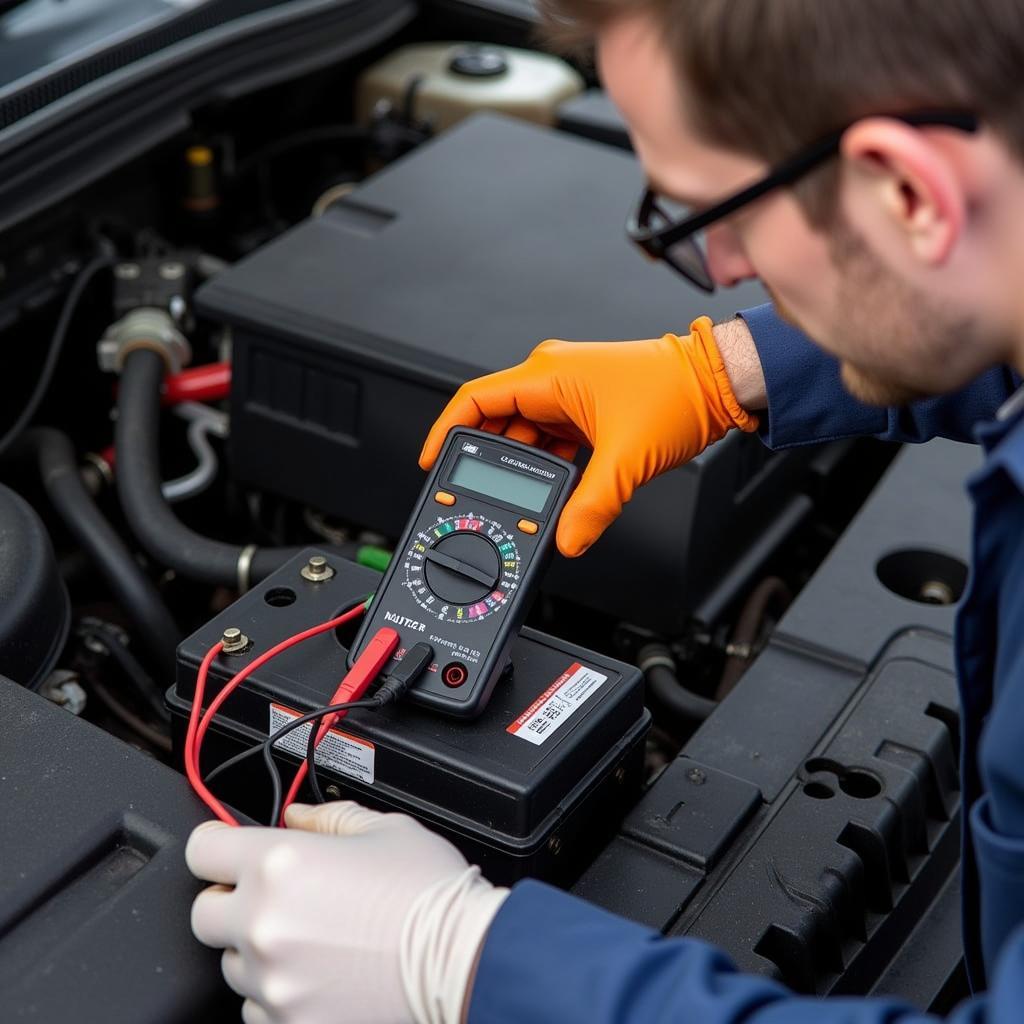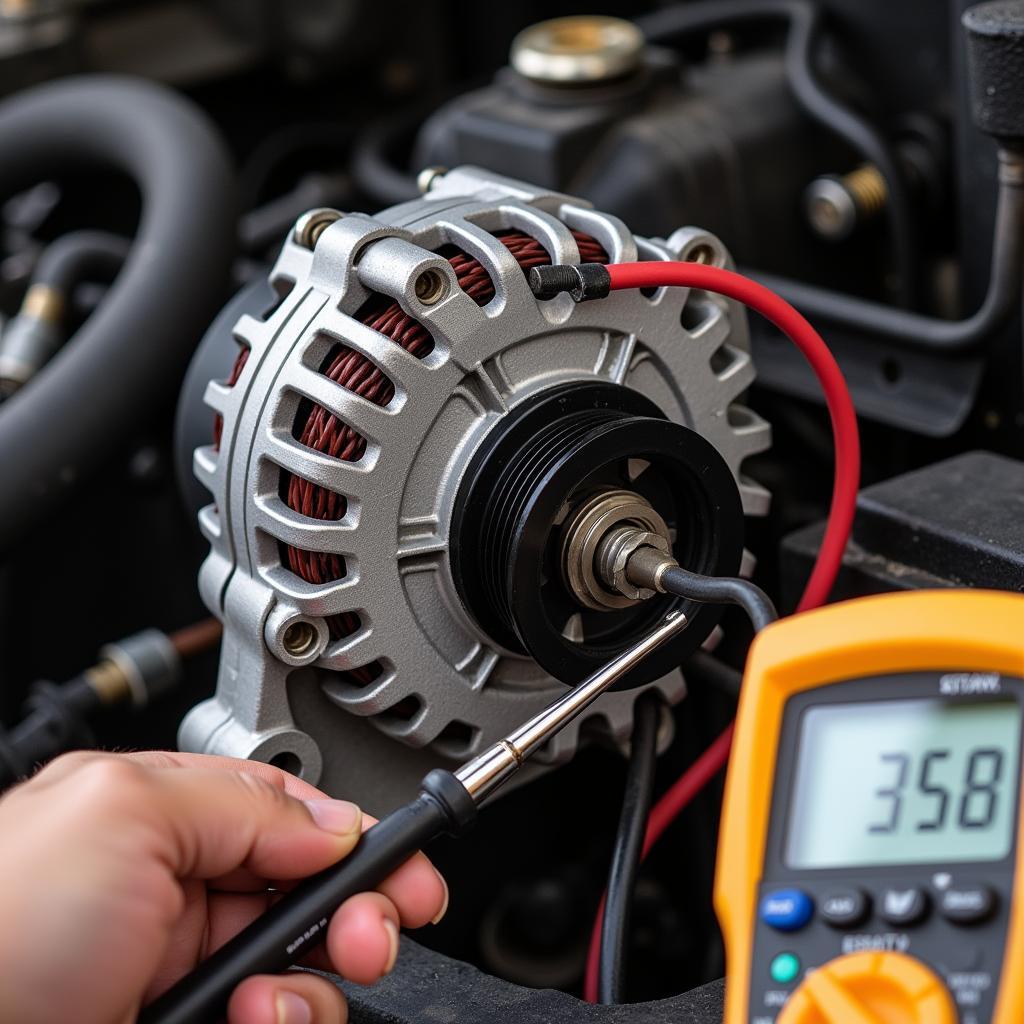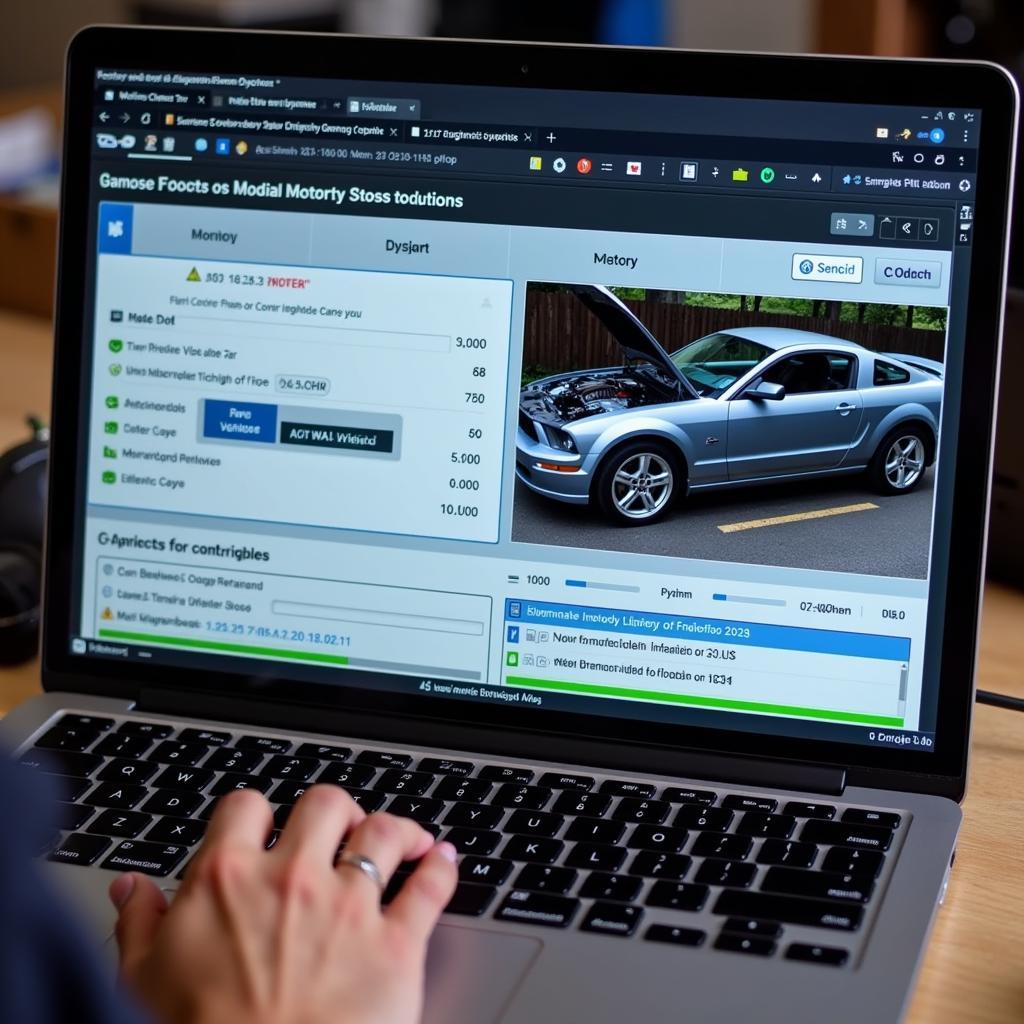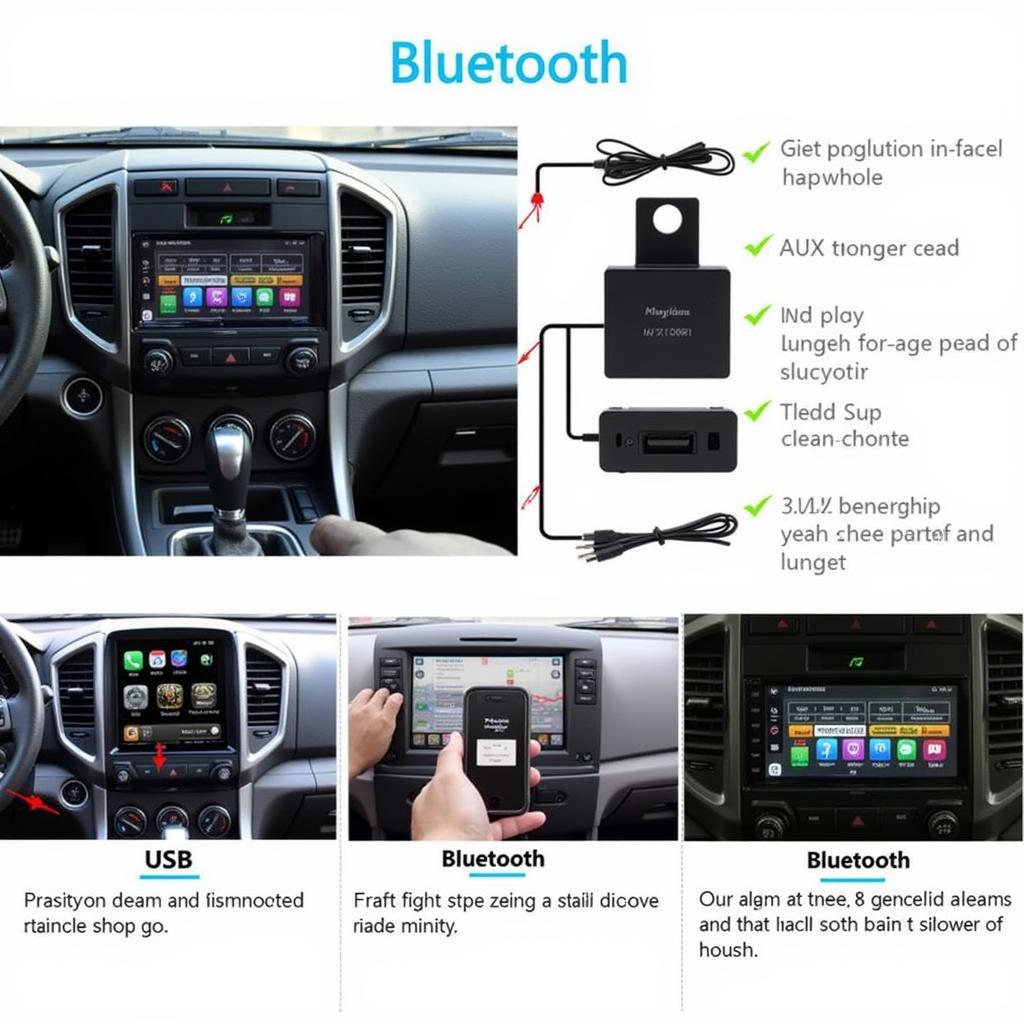A dead battery is frustrating, but the culprit isn’t always obvious. Is it a battery alternator problem? This comprehensive guide dives deep into diagnosing and fixing battery and alternator issues, helping you get back on the road quickly. We’ll explore common symptoms, testing procedures, and remote software solutions for modern vehicles.
 Testing a Car Battery and Alternator
Testing a Car Battery and Alternator
A faulty alternator or battery can leave you stranded. Understanding the difference between the two and how they interact is crucial for accurate troubleshooting. For instance, a failing alternator won’t charge the battery properly, leading to a dead battery. Conversely, a bad battery can strain the alternator, shortening its lifespan. This interconnectedness often makes pinpointing the root cause challenging. bad car battery or alternator
Identifying the Culprit: Battery or Alternator?
Pinpointing the source of your car’s electrical woes can be tricky. Here’s a breakdown of common symptoms:
Dim Headlights
Dim headlights, especially when accelerating, often point to a failing alternator. The alternator struggles to produce enough power to meet the increased demand.
Dashboard Warning Lights
The battery or charging system warning light is a clear indicator of a potential problem. It could signal a failing alternator, a bad battery, or a loose connection.
Clicking Sound When Starting
A clicking sound when turning the key usually indicates a dead or dying battery. The battery lacks the juice to engage the starter motor.
Stalling Engine
A failing alternator can cause the engine to stall intermittently. This happens because the alternator isn’t providing enough power to keep the engine running.
 Inspecting a Car Alternator
Inspecting a Car Alternator
How to Test Your Battery and Alternator
While remote diagnostic tools offer advanced insights, some basic tests can help narrow down the problem. For example, a simple voltage test across the battery terminals can reveal its state of charge. A voltage reading of around 12.6 volts indicates a healthy battery, while a significantly lower reading suggests a problem. For more in depth information you can check out this article on battery vs alternator failure.
- Battery Voltage Test: Use a multimeter to check the battery voltage.
- Alternator Output Test: With the engine running, measure the voltage across the battery terminals again. It should be around 14 volts with a functioning alternator.
- Visual Inspection: Check the alternator belt for wear and tear or slippage.
“Regular maintenance, including battery and alternator checks, can prevent unexpected breakdowns and extend the life of your vehicle’s electrical system,” advises John Smith, Senior Automotive Electrical Engineer at Advanced Auto Diagnostics.
The Power of Remote Diagnostics and Programming
Modern vehicles are increasingly reliant on software. This opens up exciting possibilities for remote diagnostics and repair. Specialized software allows technicians to access a vehicle’s onboard computer remotely, analyze data, and identify issues without physical access. This is especially useful for diagnosing intermittent electrical problems. In some cases, software updates or reprogramming can resolve issues without the need for physical repairs. This innovative approach saves time and money by eliminating the need for a trip to the repair shop. You can check out more related articles on battery bad or alternator.
 Remote Car Diagnostics Software in Action
Remote Car Diagnostics Software in Action
Why is my car battery dying even with a new alternator?
Sometimes, even with a new alternator, a car battery can still die. This could be due to a parasitic drain, where an electrical component continues to draw power even when the car is off. Identifying and eliminating the source of the drain is crucial.
“Remote diagnostics can be a game-changer for complex electrical issues,” explains Jane Doe, Lead Software Engineer at Remote Auto Solutions. “It allows us to access data that would be difficult or impossible to obtain otherwise.”
Conclusion
A battery alternator problem can be a major inconvenience. Understanding the symptoms, testing procedures, and leveraging remote diagnostic solutions can help you effectively address these issues. By staying informed and proactive, you can keep your vehicle’s electrical system running smoothly and avoid unexpected breakdowns. Addressing a alternator dead battery promptly can save you time and money in the long run. Don’t let a dead battery leave you stranded; take control of your car’s electrical health today!
FAQ
- How long does an alternator usually last?
- What are the signs of a bad voltage regulator?
- Can a bad battery damage the alternator?
- How can I prevent battery alternator problems?
- How much does it cost to replace an alternator?
- Can I jump-start a car with a bad alternator?
- Is it safe to drive with a bad alternator?



